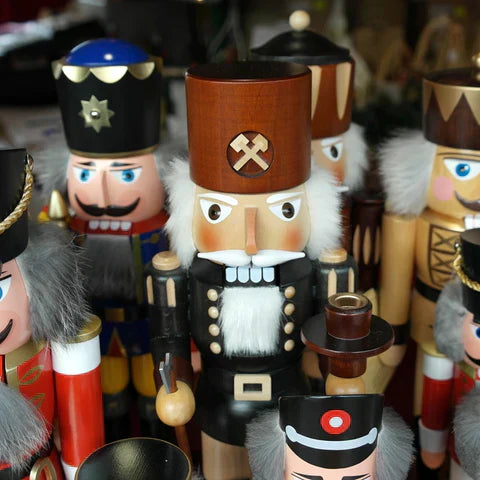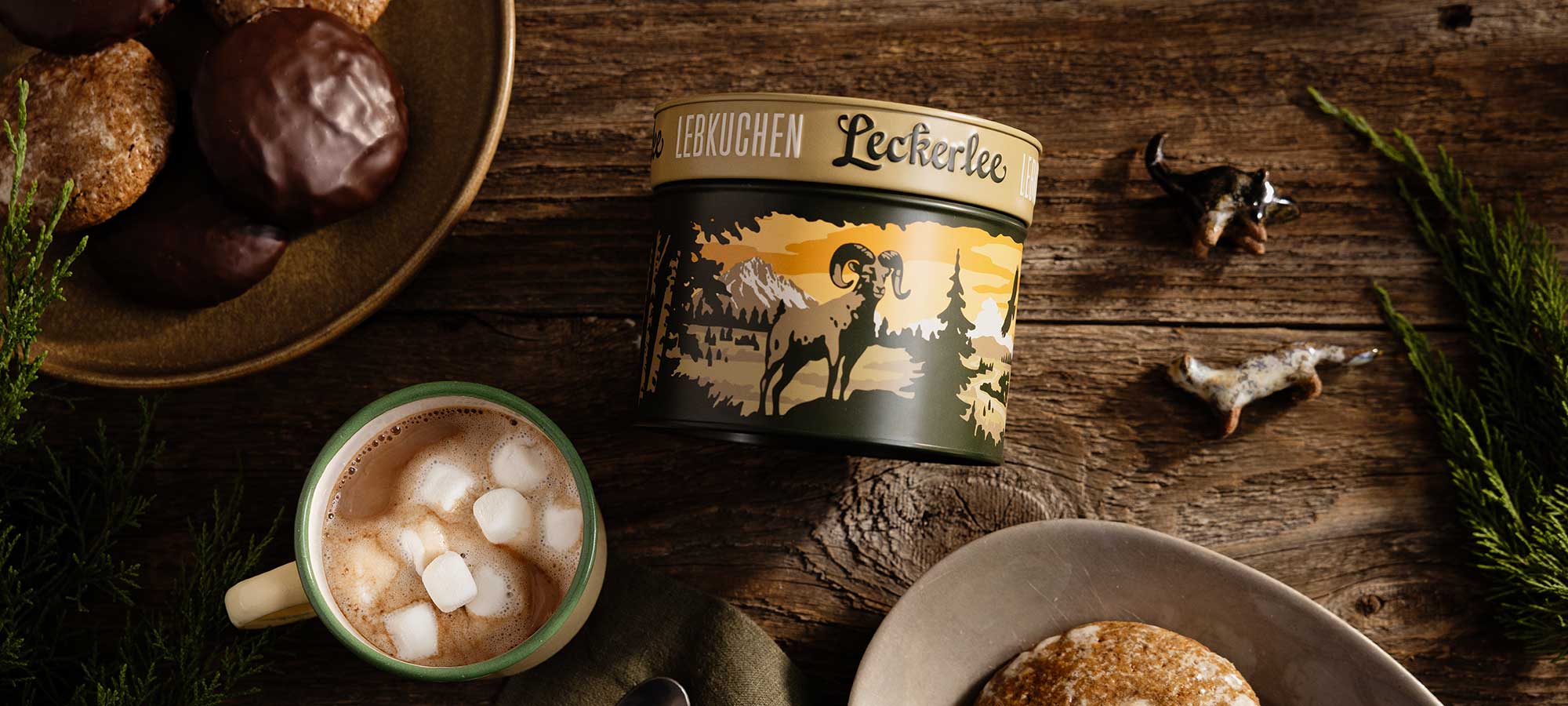We never know when a good tin idea might come to us. Some years, it’s half waiting game, half frantic search. This year, we were lucky enough to have a tin idea leap out at us.
The idea for the tin started far, far away, in the Erzgebirge (Ore Mountains) region of Germany, where miners used to pass the time by carving away at wood, fashioning wooden toys and Christmas ornaments for friends and family. Here's some of the beautiful wooden folk art from the region:

When all the silver and tin had been extracted from the mountains, the miners took to woodwork full-time and an industry was born, one that has come to define what Christmas looks like in Germany and abroad.
The town of Seiffen, located in the lower reaches of Saxony, only a few miles from the Czech border, has been the epicenter of Christmas wooden ornaments since the late 19th century. Many of the most famous folk art manufacturers, such as Müller Kleinkunst and Christian Ulbricht, are based in Seiffen.

Let's have a closer look at some of the more popular holiday decorations that the Erzgebirge has become known for all the world over, and you'll see why we chose this region as a source of rich inspiration for one of our new cookie tins.
WEIHNACHTSPYRAMIDEN

Weihnachtspyramiden, or Christmas pyramids, come in many different shapes and sizes. Structurally, they are comprised of a carousel with a pyramid-like outer frame, candle holders at the base, and a rotor at the top. For multi-tiered structures, sometimes there are also candle holders on the upper tiers.

The hot air from the lit candles helps propel the rotor, which, in turn, rotates the carousel. The pyramids typically feature nativity scenes and other traditional Christmas figures, as well as other motifs of regional significance, such as mining and forest scenes. Round and round the adorable figures go.

Most Christmas pyramids are not that large, no more than a foot high, but some are as tall as a house. The pyramids used to be hung from ceilings in Germany, and many believe them to be a precursor to the modern day Christmas tree.
NUSSKNACKER

A tough looking bunch, no? They are, of course, examples of the famed nutcracker (Nussknacker in German), which was first created in Seiffen in the late 19th century. Originally, nutcrackers were, in part, a way for the miners to poke fun at local authority figures. That’s why they often depict policemen, soldiers, and nobility with unattractively bared teeth and big boots. If the authority figures sought to crush the workers, then the workers would have them crush nuts! Since nutcrackers are world famous now, we’d say the miners had the last laugh.
SCHWIBBOGEN

Schwibbogen, also known as Christmas arches or candle arches, are another beautiful staple of Christmastime in the Erzgebirge area. The first candle arches were manufactured in 1726.

As you can see from the above vintage East German postage stamps, candle arches were made of wrought iron through the mid 20th century. Nowadays most are made of wood, and some forego the classic candles for electric light.

During Christmastime, Schwibbogen can be found in town squares and churches. They are also found in the windows of homes. Traditionally, Schwibbogen depicted mining figures and scenes, but contemporary arches show all manner of holiday and religious themes and more.
It is believed that Schwibbogen evolved from the tradition of miners hanging their lanterns in a semi-circle around the entrance to the mine. The miners, starved for light, would climb out of the darkness toward the shimmering candles. Later, the wives of miners decided to light the way home for their husbands. They placed the flickering arches in window sills to guide their husbands through the winter darkness to the beauty and warmth of home.

We hope our new tin produces the same feeling in you. We can't wait to show it to you this fall. Until then, you can take a look at all of our delicious lebkuchen products and get yourself something special this holiday season!
Photo credits:
-
Folk art: © Vitavia / CC BY-SA 4.0
-
Christmas pyramids: © onnola / CC BY-SA 2.0
-
Outdoor Christmas pyramid: © Dr. Bernd Gross / CC BY-SA 4.0
-
Iron and wood schwibbogen photos: © Kora27 /CC BY-SA 3.0
-
Schwibbogen in windows: © Devilsanddust / CC BY-SA 3.0






